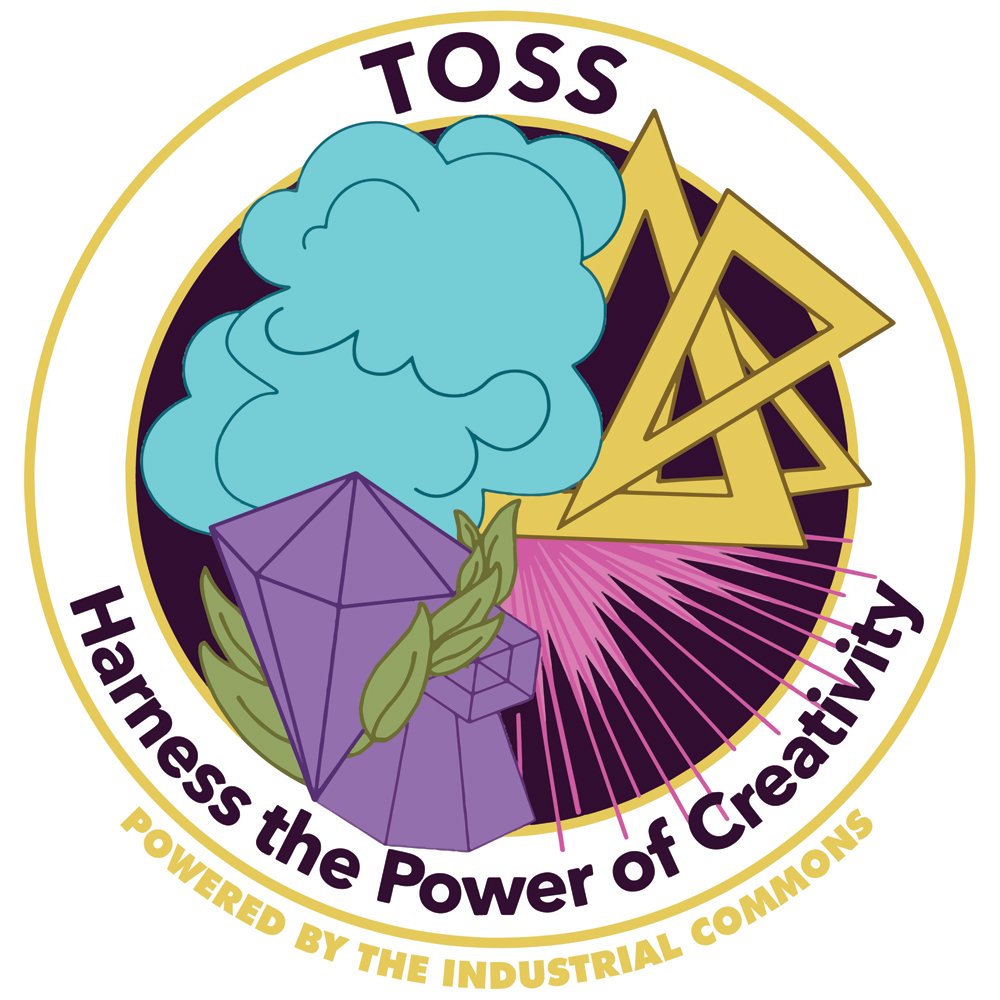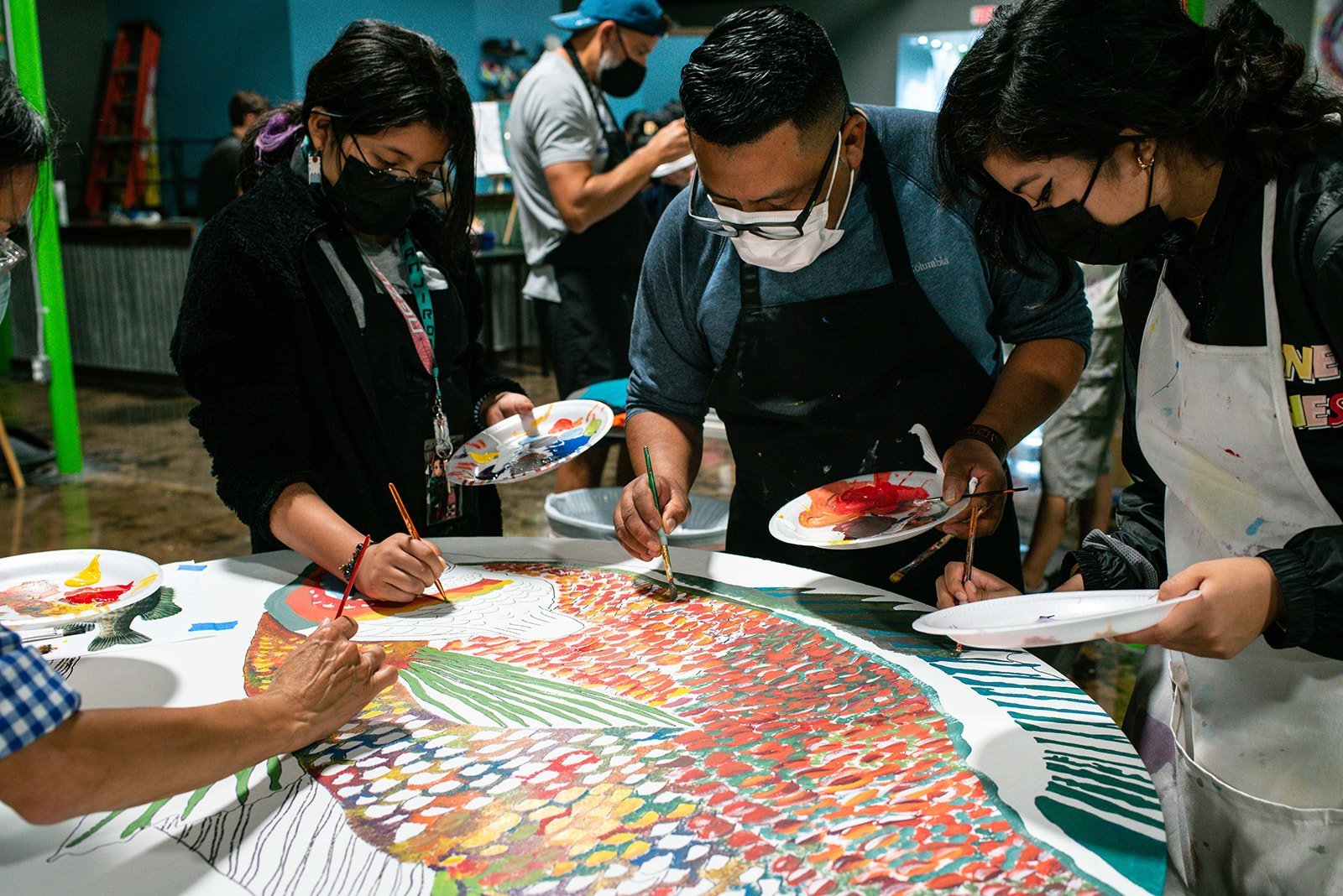Latinx of Morganton
Overview
During the 1990s, the Latinx population in Burke County grew 824 percent. Compared to the national increase of 60 percent, it is apparent that the cultural landscape of Burke County was profoundly and uniquely shifted. Most of the Latinx population consists of Mayan Guatemalans who arrived as both war and economic refugees. Other Latinx ethnic groups that live in Burke County include people from Mexico, Columbia, Honduras and El Salvador. The Latinx communities are connected by the Spanish language, which is a second language for many who have other primary ethnic dialects. The Latinx experience is an example of the relationship between traditional ethnic values and affinity spaces and cultural assimilation as experienced by many modern immigrants.
Latinx Culture In Morganton | As seen by Francisca Mendez Rodriguez
Francisca Mendez Rodriguez
A newly completed mural Realidades del Sur, seeks to share a portion of the Latinx story, here in Morganton.
On the far left of this mural is an illustration of Francisca Mendez Rodriguez. A mother, grandmother, and weaver, she is shown unfurling a colorful weaving, which transforms into the landscape of Burke County. Francisca was born in Aguacatan, Guatemala, and moved to Florida, and then Morganton following her children who relocated to NC. Francisca had seven children and was widowed in her 40s. Her son, Francisco Castro says, ”My mother was a warrior. She had a hard life in Guatemala. When her husband passed away she began to weave, sew, and sell corn husks for Chuchitos (a traditional Guatemalan dish) to support the family. Keeping the family together, loving her neighbors, and helping others were her passions. When we were growing up, our house was full of kids that needed a safe place to stay. She was a very nurturing and loving person.”
A family member shared, “Now that she has passed away we have been learning more about her impact on others. During her funeral people we did not know would come up to us and say, ‘In Guatemala, when I was in trouble, she embraced me, and taught me to be better. Francisca saved my life.’”
Francisco and his brothers (Andres, Mauricio and Gerardo) moved to NC in 1992, and Francisca followed in 2016. While in Morganton, she spent time with her family cooking and making art. She enjoyed weaving so much she would work under a cherry-blossom tree in their front yard throughout the day. Her family would sometimes wake to find Francisca outside early in the morning. She would say, “It’s so fresh. I love to hear the birds and speak to the neighbors.” She would listen to Guatemalan music on her radio while weaving incredibly intricate designs illustration plants and animals in beautiful patterns.
Francisca passed away in 2020 at the age of 70 from respiratory complications. The smoke from cooking fires and steam from traditional Tamazcales (translated as “house of heat") detrimentally effected her lungs. Her entire family was able to gather with Francisca before her passing and she will be remembered for her incredible generosity and profound artistry.






Photos by Jesse Barber
Francisco Castro-Mendez (son of Francisca) and his daughters working on the mural
Castro-Mendez family with their installed panels
The Muralist
Alexa Eliana Chumpitaz is a Latinx, full-time, visual artist based in Raleigh, North Carolina. She graduated from East Carolina University with a Bachelor in Fine Arts degree in Illustration in 2015. She currently works part-time for The NC Department of Environmental Quality (DEQ), which protects North Carolina's environment and natural resources as an education and outreach graphic designer. Whenever not working digitally, she freelances and collaborates as a traditional artist, primarily focusing on painting and illustration. To this date, she has completed two collaborative art installations that have been featured throughout the east coast of the United States and 13 murals, ten of which celebrate Latinx culture.
Artist Statement
“The mural will celebrate the biodiversity of Western North Carolina, the ecology there, specifically from the perspective of a Latinx artist paying homage to the diversity of its community, with its large Guatemalan population. I grew up on the east coast of North Carolina and am now establishing myself in the Piedmont. In the past three years, I started exploring the foothills and mountains of this beautiful and diverse state, and look forward to learning more in future adventures. I hope that others can resonate with this celebratory piece, created by my paintbrush and love of our home’s backyard.
The Monarch was an important element of the mural from the start. There is so much symbolism in butterflies themselves, which is why I love to incorporate them in my designs representing transformation, change, identity...plus they are so vibrant and beautiful! The migration of the Monarch (in Eastern North America making a long, migratory journey to the Sierra Madre Mountains of Mexico) is similar to the story of many Latinx families.
I so appreciate the struggles my parents went through, just so that I could have a better life here. I am a first-generation American, on both sides of my Peruvian family, and my parents never hesitated to support my decision to be an artist. This mural is important, not just for me, but for others who need a vision of hope. For me, it demonstrates that you can make an impact as a Latinx-American woman! I want my art to engage, educate, and empower all types of people, in different walks of life, and this is why this mural means so much to me.
I wanted to create a depiction of the Catawba River Basin that brings the fauna and flora, the backyard of Western North Carolina, to the forefront incorporating the figure of a Latina woman. The figure is bringing life into the rest of the mural, her hair turning into the water. This is inspired by the culture of the Catawba Native Americans which was very matriarchal.
I chose the Catawba River because it is such an important resource spanning over two hundred miles between North and South Carolina, providing energy to a growing population with 1.7 million people depending on its resources. With that being said, in the past, there hasn’t been proper water use education, and along with environmental strains (such as droughts, climate change) and the 11 dams that are on the river, American Rivers declared the Catawba endangered, in 2008. Thankfully, communities came together and made significant improvements to decrease negative impacts on the river. I want people to know how important this basin is to the biodiversity of the region, and how we can make a significant impact on the health of our environment.”
A series on interviews with Guatemalans in Morganton discussing the possibility of a mural in Morganton celebrating Guatemalan culture. Winter 2018.










